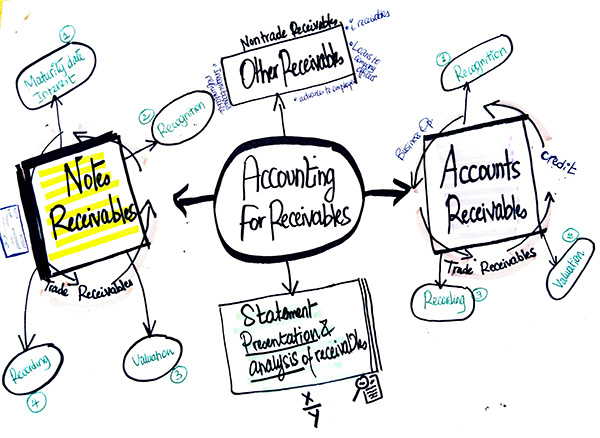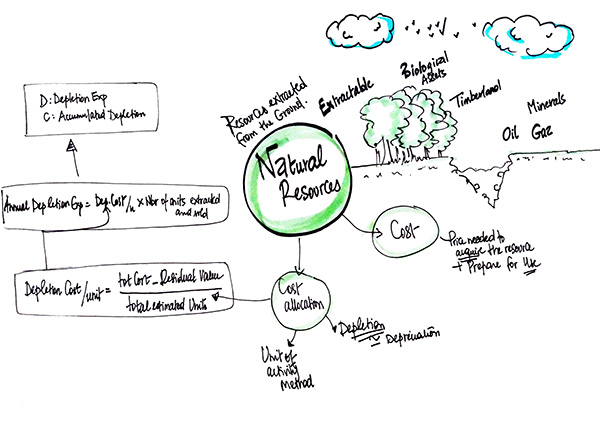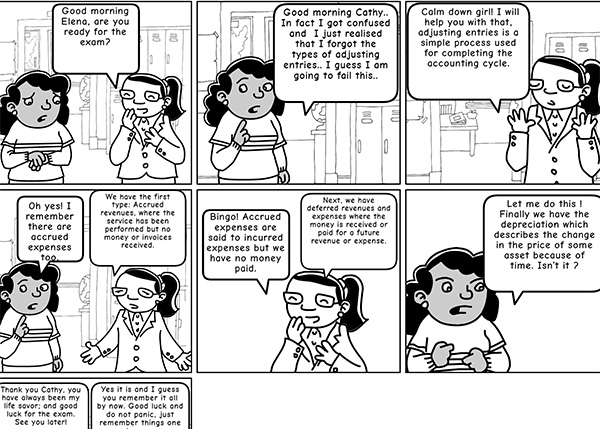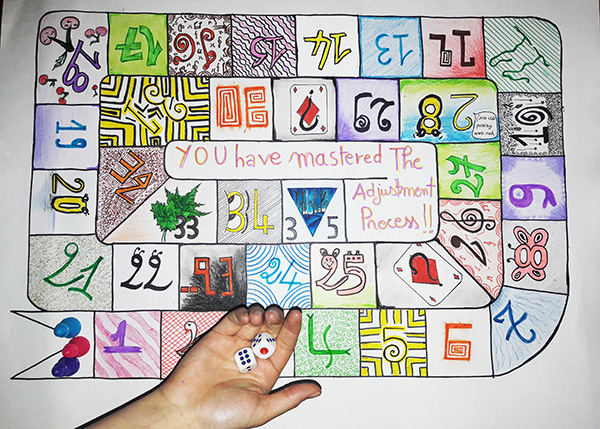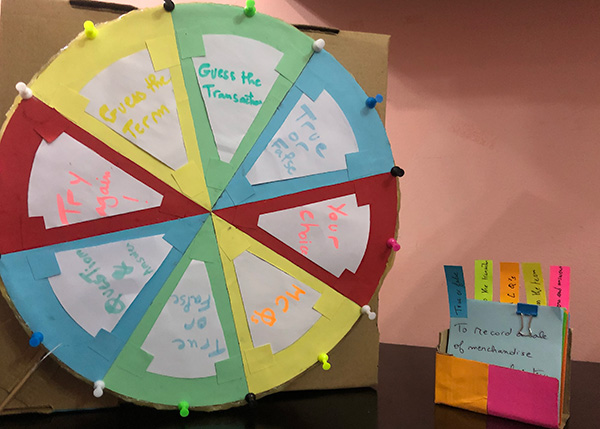The transformative power of blending creativity with accounting education
Sondos Bannouri explains how blending creativity with education has sparked a small revolution in teaching accounting concepts at Tunis Business School.

Teaching innovations with creativity
At Tunis Business School (TBS), I’ve implemented creative techniques to enhance student learning experiences and encourage active participation. Recognising the impact that visual aids have in facilitating comprehension, I introduced vibrant colours and imaginative illustrations into my lectures. These visual cues elucidated complex concepts, making abstract ideas more tangible and accessible to students.
In addition to colourful illustrations, I used attractive mind maps to organise and simplify intricate topics. By visually mapping out interconnected ideas, students grasped the relationships between various accounting principles and frameworks more effectively.
However, a highlight of my teaching has been introducing the “Fun Work” project — a dynamic end-of-semester assignment designed to foster creativity and critical thinking. Students select a chapter from the course curriculum and present it “in a creative and artistic manner.” Embracing the ethos of mixing logic with creativity, I encourage students to explore creative and innovative techniques to convey accounting and finance concepts.
The results were diverse and inspiring, ranging from songs and poems to drawings, comics, videos, cartoons, memes, and games. One standout project was the “Fortune Wheel” game, created by a first-year student. This gamified the learning experience by presenting accounting questions, true/false statements, and transaction scenarios on the wheel’s spin. This interactive approach made learning enjoyable and reinforced understanding and retention of accounting principles.
Overcoming challenges
This journey has not been without its challenges. Initially, students were sceptical of incorporating creativity into accounting and finance education. This was particularly prevalent among more advanced students, which I imagine comes from the ingrained expectations of traditional educational approaches. Overcoming their resistance required patience, persistence, and a commitment to demonstrating the effectiveness of creative teaching methods in enhancing learning outcomes.
To encourage students, I embarked on initiatives to raise awareness and foster appreciation for innovative teaching methods. I promoted the belief that creativity is essential to intellectual growth and development, using words attributed to Albert Einstein.
Creativity is intelligence having fun.
Logic will take you from A to B. Imagination will take you everywhere.
Artistic initiatives
I believe strongly that artistic disciplines play a pivotal role in supporting holistic learning and the professional development of students. In 2017, I reopened the TBS Painting Club, collaborating closely with students to cultivate creativity through art-related workshops and events. This endeavour marked the genesis of the Art Factory TBS club — a vibrant community that serves as a melting pot of artistic disciplines, including painting, dancing, music, theatre, and cinema.
Most clubs at TBS are business-oriented. So, the Art Factory TBS club stands out as a platform of artistic expression, providing a space for students to explore and showcase their creative talents. Supported by the TBS administration, the club receives essential resources and funding, enabling it to host diverse events, including the popular TBS Got Talent, an annual showcase inspired by the internationally renowned America’s Got Talent.
With over 100 student members benefiting from its activities annually, the Art Factory TBS club has become a cornerstone of artistic enrichment at TBS. The club provides students with opportunities for personal growth, self-expression, and holistic well-being through its diverse offerings, including art-related workshops and therapeutic art sessions.
Promoting well-being at the university
My students and I are committed to enhancing mental health and well-being within the university community, extending our efforts beyond artistic showcases to focus on holistic wellness initiatives.
Within the Art Factory TBS club, we organised a therapeutic art workshop titled “Spirit Fest” to raise awareness of the importance of mental health and well-being. A collaboration with psychologists and therapists, the workshop provided participants with valuable insights and coping mechanisms. The “Laughter Yoga” session added an element of joy and relaxation, while healthy food breaks nourished both body and mind.
Another initiative is “Let’s Walk the Chalk,” which seeks to foster a supportive and inclusive environment. This painting workshop brought together students, professors, and administrative faculty members to promote cohesion, collaboration, and creativity. Using a versatile and environmentally friendly water-based paint, they transformed university benches, injecting vibrant colours and visual joy into the student break areas.
Collaborating with the TBS administration, we implemented one-on-one therapy sessions to support students. These initiatives underscore our commitment to creating a supportive and inclusive campus environment where students feel valued, supported, and empowered to prioritise their mental health and well-being.
Through our collective efforts, we have fostered a culture of wellness and resilience at Tunis Business School, promoting academic success, holistic growth, and personal development.
What’s next for blending creativity with education?
The enthusiastic response and positive student feedback indicate that these innovations have succeeded. However, I plan to research the impacts on student engagement, comprehension, and academic performance to provide more concrete evidence of their effectiveness. By gathering data and conducting empirical studies, I aim to demonstrate the tangible benefits of creativity in education and contribute to the growing body of research in this field.
My focus is on further refining and expanding upon these innovative techniques. I am committed to continuing my research efforts to validate the effectiveness of creative teaching methods and explore new avenues for enhancing student learning experiences. Additionally, I seek to collaborate with fellow educators and researchers who share a passion for innovation in education, forming a community dedicated to driving positive change in teaching practices.
My advice for educators interested in implementing similar innovative techniques is simple: believe in the power of creativity to transform education. Start by incorporating small creative elements into your teaching and observe the impact on student engagement and comprehension. Don’t be discouraged by initial resistance — persistence, consistency, and patience are key. Surround yourself with a supportive community of like-minded educators and researchers who can provide inspiration, guidance, and collaboration opportunities.
Together, we can revolutionise education and empower future generations to think creatively and critically.
© AccountingCafe.org
Sondos Bannouri
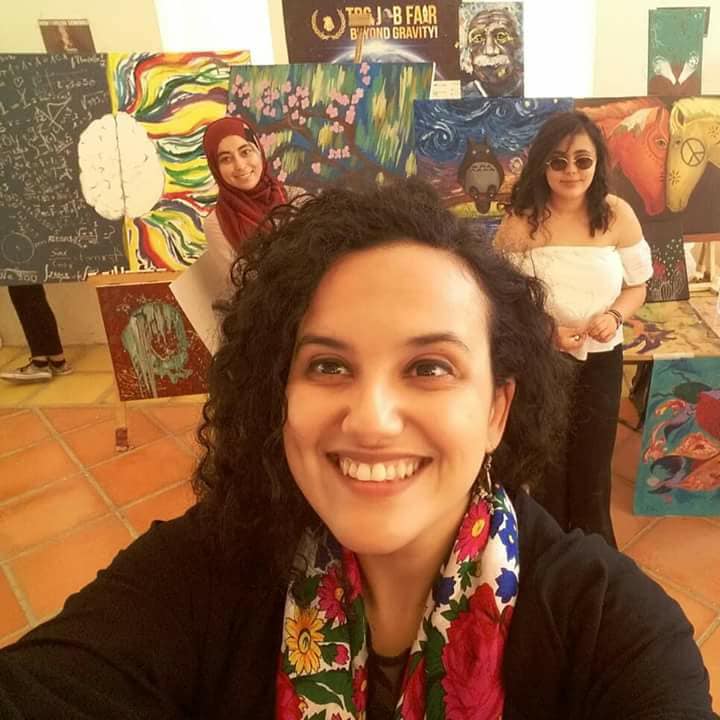
Sondos Bannouri is a Tunisian native with a PhD in Accounting from the University of Manouba, Tunisia. As a self-taught artist, she has a passion for artistic expression and views creativity as a catalyst for development. Her work is at a thrilling intersection of education, humanitarian work, and the corporate world. With over a decade of experience in higher education, she has honed her skills as an educator, teaching various accounting and finance courses. Since 2016, she’s taught at Tunis Business School (TBS), renowned for its adoption of the US higher education system.
She teaches undergraduate students and contributes to the Master of Management of NGOs programme.



